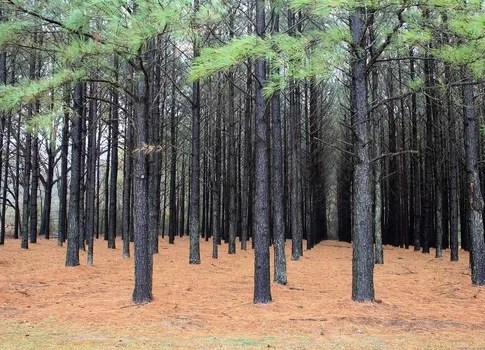Plantation Forestry in Australia: Barriers to Entry and Opportunities for Growth
Plantation forestry has long been a critical component of Australia’s forestry sector, contributing to the economy, supporting biodiversity, and providing sustainable timber resources. However, while the benefits of plantation forestry are clear, there are several barriers to entry that potential investors and farmers need to consider.
This blog will explore these barriers and highlight the opportunities for overcoming them to foster growth in this vital industry.
Understanding Plantation Forestry
Plantation forestry involves the establishment and management of tree plantations for commercial purposes. Unlike natural forests, plantation forests are systematically planted, managed, and harvested to optimize yield and quality. Common species in Australia include pines (Pinus radiata), eucalypts (Eucalyptus spp.), and acacias (Acacia spp.), each chosen for their specific growth characteristics and market value.
Barriers to Entry
1. High Initial Costs
Establishing a plantation forest requires significant upfront investment. Costs include land acquisition, site preparation, planting, maintenance, and infrastructure development. These high initial costs can be a substantial barrier for individual landowners or small-scale investors.
2. Long Maturity Period
Tree plantations often take several years, sometimes decades, to reach maturity and provide a return on investment. This long time horizon can be a deterrent for investors seeking quicker returns. For example, species like Pinus radiata may take 25-30 years to mature, while some eucalypt species can be harvested after 10-15 years, but still require significant time investment.
3. Land Availability and Competition
Securing suitable land for plantation forestry can be challenging due to competition with agriculture, urban development, and conservation efforts. Land that is ideal for plantation forestry is also often highly valued for other uses, making it expensive and difficult to acquire.
4. Regulatory and Policy Challenges
Navigating the regulatory landscape can be complex. This includes obtaining the necessary permits, adhering to environmental regulations, and complying with land use policies. Changes in government policies and regulatory frameworks can also create uncertainty and affect long-term planning.
5. Market Fluctuations
The forestry industry is subject to market fluctuations, influenced by global supply and demand, economic conditions, and trade policies. Price volatility for timber and other forest products can impact the profitability and financial viability of plantation forestry projects.
6. Environmental and Social Concerns
Environmental concerns such as biodiversity loss, water use, and soil degradation can pose barriers. Social issues, including land tenure conflicts and community opposition, may also arise, particularly if plantation forestry projects are perceived to negatively impact local communities and ecosystems.

Opportunities for Overcoming Barriers
1. Financial Support and Incentives
Governments and financial institutions can play a crucial role in providing financial support and incentives. Grants, subsidies, and low-interest loans can help offset initial costs and make plantation forestry more accessible to smaller investors and landowners.
2. Short-Rotation Species
Choosing fast-growing, short-rotation species can reduce the time to harvest and provide quicker returns on investment. Eucalyptus species, for instance, can be harvested within 10-15 years, making them an attractive option for plantation forestry.
3. Integrated Land Use Planning
Promoting integrated land use planning can help balance the needs of forestry, agriculture, and conservation. Policies that support multi-purpose land use and agroforestry practices can enhance land productivity and sustainability.
4. Regulatory Streamlining
Streamlining regulatory processes and providing clear guidelines can reduce complexity and uncertainty. Collaborative approaches between government agencies, industry stakeholders, and communities can facilitate compliance and support sustainable practices.
5. Market Development and Diversification
Developing new markets and diversifying products can mitigate market risks. This includes exploring value-added products, such as engineered wood and bioenergy, and tapping into emerging markets for carbon credits and ecosystem services.
6. Community Engagement and Environmental Stewardship
Engaging local communities and prioritizing environmental stewardship can address social and environmental concerns. Participatory approaches that involve communities in decision-making processes and promote sustainable practices can enhance the social license to operate and ensure long-term success.
While plantation forestry in Australia faces several barriers to entry, these challenges are not insurmountable. By leveraging financial incentives, choosing appropriate species, promoting integrated land use, streamlining regulations, diversifying markets, and engaging communities, the plantation forestry sector can thrive.
Addressing these barriers not only supports economic growth but also contributes to environmental sustainability and social well-being. With the right strategies and support, plantation forestry in Australia has the potential to be a cornerstone of a resilient and sustainable future.
Related stories
Forestry Corp Admits Guilt Destroyed Vital Trees
Endangered Greater Glider Killed in Yarra Ranges National Park
The Battle for Wild Cattle Creek State Forest
Illegal Logging in Styx River State Forest Must Stop
Biodiversity Appreciation: Insights from the Community
MPs $64,000 question – Save Koalas or logging trucks
NSW Forestry Corp fines exceed $1,000,000 since 2019 fires
Forestry Corp NSW forms a special police branch
Citizen Scientists Take Action in Bulga State Forest
Logging Threatens Koala Habitat Despite Community’s Pleas
EPA stops logging at Flat Rock State Forest
EPA’s Stop Work Order extended in Tallaganda State Forest
Greater Glider heading for extinction
NSW Forestry Corp have a fight on their hands to Save Bulga Forest
Midcoast Council Votes to Save Bulga Forest on Biripi Country
The Great Koala National Park without any Koalas
Is AUKUS damaging Australia’s relationship with China?
Era of Change: 1960s-70s Revolution & Welcome to Country
Please comment below or visit our advertisers, if this is interesting to you. ChatGPT assisted. Thanks for visiting our growing magazine.




